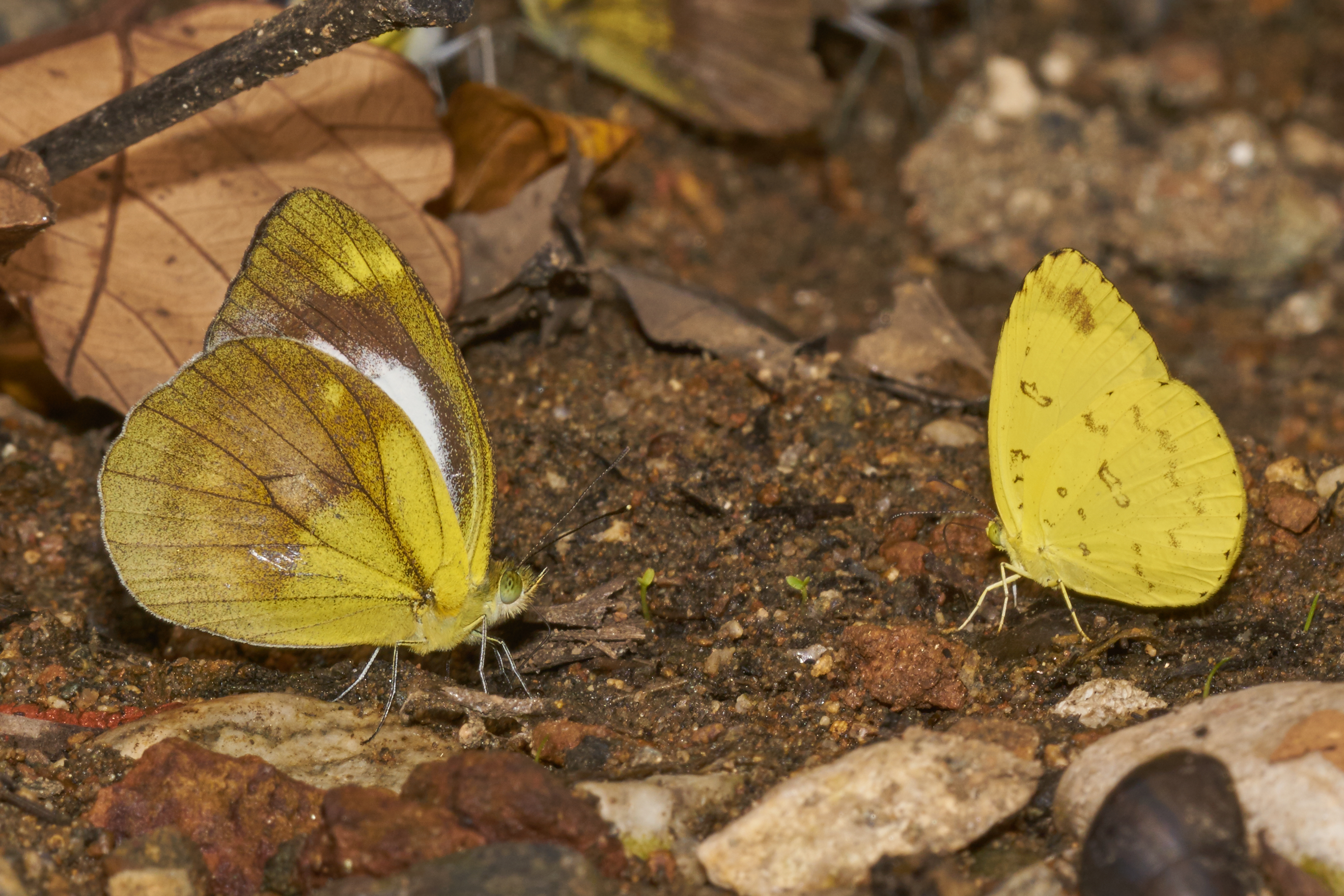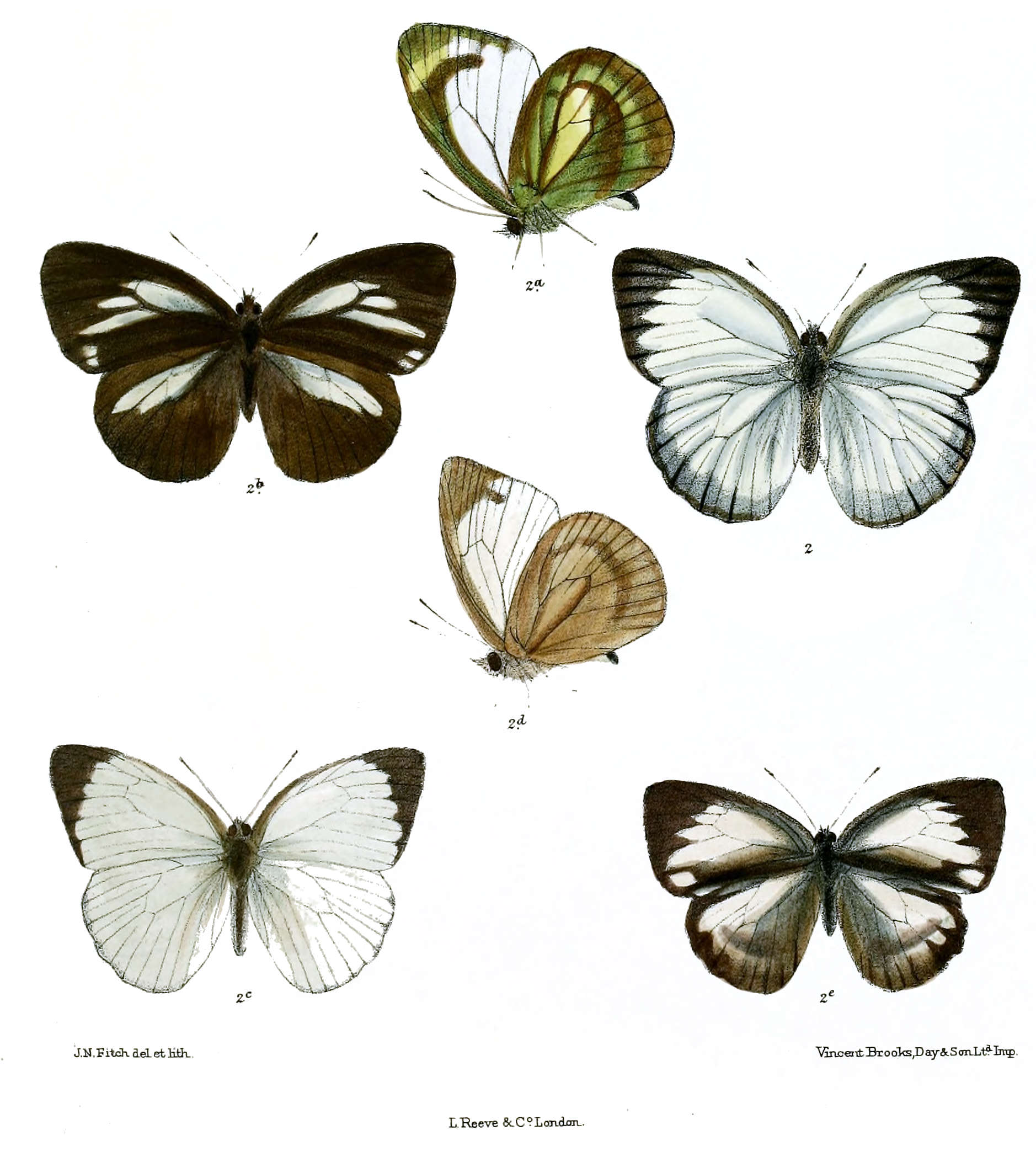Cepora Nadina on:
[Wikipedia]
[Google]
[Amazon]
''Cepora nadina'', the lesser gull, is a small to medium-sized 

butterfly
Butterflies are insects in the macrolepidopteran clade Rhopalocera from the Order (biology), order Lepidoptera, which also includes moths. Adult butterflies have large, often brightly coloured wings, and conspicuous, fluttering flight. The ...
of the family Pieridae
The Pieridae are a large family of butterflies with about 76 genera containing about 1,100 species, mostly from tropical Africa and tropical Asia with some varieties in the more northern regions of North America and Eurasia.DeVries P. J. in Levi ...
, that is, the yellows and whites. The species was first described by Hippolyte Lucas
Pierre-Hippolyte Lucas (17 January 1814 – 5 July 1899) was a French entomologist.
Lucas was an assistant-natural history, naturalist at the Muséum national d'Histoire naturelle. From 1839 to 1842 he studied fauna as part of the scientific com ...
in 1852. It is native to Sri Lanka
Sri Lanka (, ; si, ශ්රී ලංකා, Śrī Laṅkā, translit-std=ISO (); ta, இலங்கை, Ilaṅkai, translit-std=ISO ()), formerly known as Ceylon and officially the Democratic Socialist Republic of Sri Lanka, is an ...
, India
India, officially the Republic of India (Hindi: ), is a country in South Asia. It is the seventh-largest country by area, the second-most populous country, and the most populous democracy in the world. Bounded by the Indian Ocean on the so ...
, Myanmar
Myanmar, ; UK pronunciations: US pronunciations incl. . Note: Wikipedia's IPA conventions require indicating /r/ even in British English although only some British English speakers pronounce r at the end of syllables. As John C. Wells, Joh ...
, Hainan
Hainan (, ; ) is the smallest and southernmost province of the People's Republic of China (PRC), consisting of various islands in the South China Sea. , the largest and most populous island in China,The island of Taiwan, which is slightly l ...
, and southeast Asia
Southeast Asia, also spelled South East Asia and South-East Asia, and also known as Southeastern Asia, South-eastern Asia or SEA, is the geographical United Nations geoscheme for Asia#South-eastern Asia, south-eastern region of Asia, consistin ...
.

Description

Wet-season brood
Male has the upperside ground colour white. Forewing has the basal half of costal margin suffused with greenish yellow and irrorated (sprinkled) sparsely with black scales; apex from the middle of the costa and termen black, the inner margin of the black arched and acutely produced inwards along the veins, the black on the termen narrowed posteriorly and in interspaces 1a and 1 reduced to a mere thread. Hindwing: terminal margin with a broad dark band, due to the markings of the underside that show through by transparency, the darkness accentuated by a slight irroration of black scales; apices of some of the anterior veins black, in some specimens these are dilated and form a narrow anterior black border. Underside: white. Forewing: costal margin and apex very broadly suffused with greenish yellow and irrorated more or less densely with black scales, these latter form also diffuse subterminal patches on the white ground colour in interspaces 3 and 4; a preapical oblique short band bright yellow, its margins ill-defined; in interspaces 1 to 3 the black terminal markings on the upperside show through as a greyish-blue shade. Hindwing: suffused with greenish yellow that leaves only a broad streak in the cell (continued beyond in interspaces 4 and 5) of the white ground colour apparent; the whole surface of the wing more or less densely irrorated with black scales, these have a tendency to form a broad lower obscure discal dark patch and a broad terminal margin, the space between these two bright yellow; a spot of bright yellow also in inter-space 6. Antennae black; the head and thorax anteriorly with long greenish hairs, thorax posteriorly with greyish-blue pile: abdomen black with short white hair-like scales; beneath: the palpi with blackish hairs, the thorax yellow, abdomen white. Female upperside, forewing: dark brownish black; an oval, elongate, broad streak in cell, continued beyond into the base of interspace 4, broad streaks outwardly ill-defined from bases of interspaces 2 and 3, a large subterminal spot in interspace 1 and a pretornal short streak along the dorsal margin, white. The amount of white marking is variable in some specimens, nearly the whole of the cell and the greater portion of the basal area of interspace 1 are sometimes also white. Hindwing: dark brownish black fading to dusky brownish white posteriorly; cell, basal half of interspace 4 and an elongate, broad, outwardly pointed streak in interspace 5 white. Underside: similar to that of the male, but the white area on the forewing more restricted and of a purplish tint, the dusky-black shading on the disc that borders the green on the apical area broader, and the greater portion of interspaces 1a and 1 also shaded with dusky purplish black. Hindwing: darker than in the male, the veins more prominently bordered with black scaling, the posterior, discal, ill-defined, dark band or patch broader and more conspicuous. Antenna, head, thorax and abdomen purplish brown, the thorax with some long greyish hairs; beneath: the palpi and thorax greenish yellow, abdomen whitish.Dry-season brood
Male is similar to the wet-season brood, but on the upperside, the black on the apex and termen of the forewing not nearly so broad, on the latter often not reaching vein 1; on the hindwing the black is reduced to a sparse powdering of black scales along the termen. Underside: similar to that of the wet-season brood but the greenish-yellow suffusion replaced entirely by ochraceous brown; on the hindwing the white markings of the wet-season form replaced by a paler ochraceous shade than on the rest of the wing; the veins all broadly bordered with irrorated black scaling; the discal obscure transverse band more or less as in specimens of the wet-season brood, but often obsolescent. Antennae black, head and thorax anteriorly ochraceous brown, thorax medially and posteriorly with long bluish-grey pile, abdomen black with short white hair-like scaling; beneath: the palpi ochraceous with some black hairs, thorax ochraceous brown, abdomen white. Female very similar to those of the wet-season female, but the blackish-brown colouring on the upperside paler and duller in tint. Underside: differs in the yellowish-green suffusion on both forewings and hindwings, which is replaced by ochraceous brown. Antennae, head, thorax and abdomen as in the male. Wingspan of 58–74 mm.Distribution
North-eastern India: Sikkim; Bhutan; Assam: Sylhet; the Khasi Hills; Manipur: Upper and Lower Burma; the Shan States; Tenasserim. Subspecies ''C. n. remba'' is found inSri Lanka
Sri Lanka (, ; si, ශ්රී ලංකා, Śrī Laṅkā, translit-std=ISO (); ta, இலங்கை, Ilaṅkai, translit-std=ISO ()), formerly known as Ceylon and officially the Democratic Socialist Republic of Sri Lanka, is an ...
and southern India while ''C. n. andamana'' is found in the Andaman Islands
The Andaman Islands () are an archipelago in the northeastern Indian Ocean about southwest off the coasts of Myanmar's Ayeyarwady Region. Together with the Nicobar Islands to their south, the Andamans serve as a maritime boundary between th ...
.
Subspecies
Subspecies are: *''C. n. nadina'' (Sikkim to Indo-China, Thailand, southern Yunnan) *''C. n. remba'' Moore, 1857 (southern India) *''C. n. cingala'' Moore, 1905 (Sri Lanka) *''C. n. andamana'' C. Swinhoe, 1889 (Andamans) *''C. n. andersoni'' (Distant, 1885) (Peninsular Malaya) *''C. n. fawcetti'' (Butler, 1899) (Sumatra) *''C. n. eunama'' (Fruhstorfer, 1908) (Taiwan) *''C. n. hainanensis'' (Fruhstorfer, 1913) (Hainan)References
{{Taxonbar , from=Q2343829 Pierini Butterflies of Asia Butterflies of Indochina Butterflies described in 1852